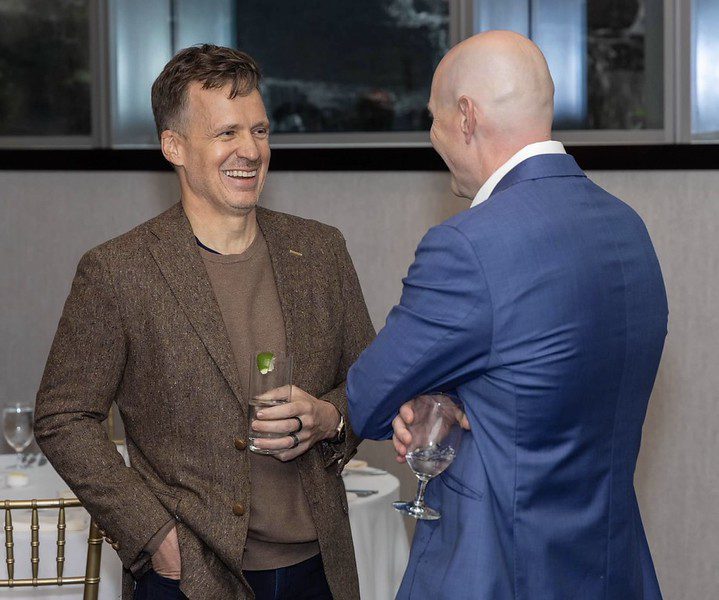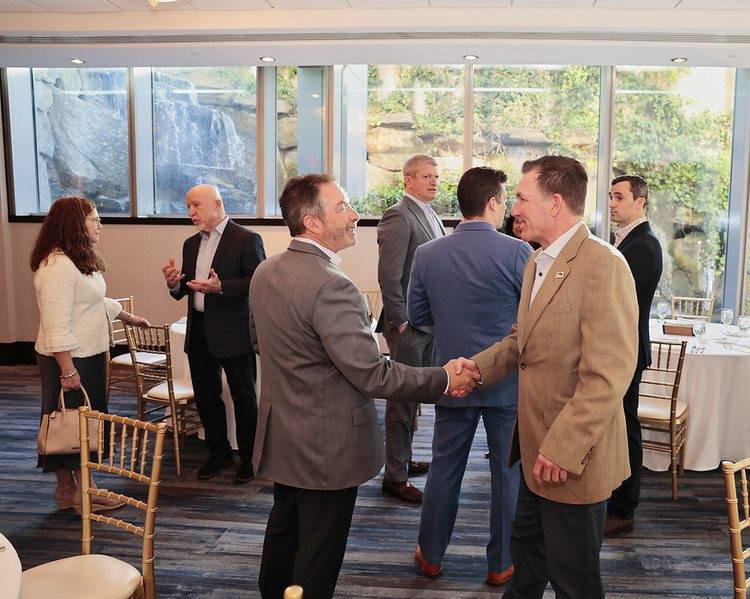Every day, the average person makes around 35,000 decisions — from what to wear, what to eat, what to reply, what to ignore, what tasks to do next, and how to react to unexpected problems. Now imagine being a CEO, entrepreneur, or leader whose decisions don’t just affect their own day, but an entire company, team, or even an industry.
This is where decision fatigue becomes a real enemy.
Decision fatigue is the mental exhaustion caused by having to make too many decisions, and it affects even the most brilliant minds. When leaders are drained, their ability to think clearly, stay strategic, and make sound choices declines. The result? Poor judgment, slower thinking, emotional reactions, procrastination, and even bad leadership calls.
But what separates great leaders and CEOs from everyone else is this:
They recognize decision fatigue early
They simplify choices to protect energy
They build systems that reduce mental load
In this blog, we’ll explore how great leaders manage decision fatigue—how they think, how they choose, and how they stay sharp in a world full of endless decisions.
What Is Decision Fatigue and Why Does It Matter for Leaders?
Decision fatigue happens when the brain becomes tired from too many decisions in a short period of time. Just like a muscle, the brain loses strength and accuracy the more it is used.
For CEOs, founders, and executives, decision fatigue is dangerous because:
- Their decisions have high impact
- They make decisions constantly
- They can’t afford mental errors
When leaders are mentally overloaded, they start:
- Delaying choices
- Making emotional decisions
- Saying “yes” too quickly just to end the conversation
- Avoiding decisions completely
- Defaulting to the safest—but not the best—option
This leads to inefficiency, lack of clarity, slow progress, and burnout.
What Causes Decision Fatigue in CEOs and Leaders?
1. Constant decision-making
Whether it’s hiring, financial choices, product direction, strategy, or conflict resolution — CEOs are never not deciding something.
2. Multitasking and endless problem-solving
Leaders often switch between micro and macro decisions — from fixing a team issue to reviewing a billion-dollar plan.
3. Too much information
The more data, reports, emails, dashboards, and opinions coming in, the more mental filtering is required.
4. Lack of clear priorities
Without clarity on what matters, everything feels urgent, which drains the brain faster.
5. No decision-making system
When every decision is made manually instead of through a process, mental exhaustion multiplies.
How Great Leaders Reduce Decision Fatigue
1. They Automate Small Decisions
Steve Jobs wore the same black turtleneck every day. Mark Zuckerberg wears the same style of grey T-shirt. Barack Obama said he only chose between blue and gray suits.
Why?
Because eliminating small choices protects mental energy for big decisions.
Ask yourself:
- What daily choices can I automate?
- Can I standardize meals, clothes, schedule blocks, routines?
The fewer “What should I…?” moments, the sharper your mind stays.
2. They Use Time-Blocking to Limit Decision Switching
Instead of deciding what to do all day long, leaders block time for specific tasks:
- 9–11 AM: Strategy decisions
- 1–3 PM: Team meetings
- 4–5 PM: Review + planning
Time-blocking reduces:
Unplanned interruptions
Constant switching
Decision overload
It increases:
Focus
Mental clarity
Quality of thinking
They save brainpower for decisions that matter most
3. They Delegate Decisions That Others Can Make
A CEO doesn’t need to decide:
- What email template to use
- Which software version to install
- What color the presentation header should be
Great leaders use the 70% rule:
If someone can do it 70% as well as you, delegate it.
Delegation = More brain energy for CEO-level thinking.
4. They Use “Decision Filters” or Criteria Lists
Instead of deciding from scratch every time, leaders create pre-built filters, for example:
Hiring decision filter:
- Culture fit?
- Skill match?
- Will this person grow the team?
- Do references align?
Investment decision filter:
- Does it support long-term goals?
- Is it scalable?
- Is the risk acceptable?
The more systems, the fewer choices the brain has to analyze.
5. They Limit the Number of Decisions Per Day
Jeff Bezos limits himself to three high-quality decisions a day.
He says:
“If I make three good decisions in a day, it was a great day.”
This isn’t laziness — it’s focus.
Quality > Quantity.
6. They Make Decisions Early in the Day
Research shows that decision-making ability is highest in the morning and declines throughout the day.
That’s why CEOs protect early hours for:
- Strategy
- Critical thinking
- High-risk decisions
And leave:
- Emails
- Admin work
- Routine approvals
for later in the day.
7. They Avoid “Decision Drainers”
Examples:
- Too many choices
- Open-ended discussions
- No deadlines
- Emotion-driven decisions
- Endless back-and-forth emails
Instead, they use:
Short meetings
Written briefs
One-page summaries
Clear yes/no questions
8. They Rest Their Brain on Purpose
Leaders don’t rely on willpower alone. They use breaks, silence, sleep, nature walks, exercise, meditation — not as luxuries, but as mental reboot tools.
Because a tired brain makes tired decisions.
Real Examples of CEOs Beating Decision Fatigue
| Leader | Strategy to Reduce Decisions |
| Elon Musk | Uses strict time-boxing and batch decision sessions |
| Tim Cook | Wakes up at 3:45AM to make key decisions before interruptions |
| Warren Buffett | Says no to 99% of opportunities to protect thinking time |
| Oprah Winfrey | Limits meetings and uses clarity journaling before making decisions |
| Reed Hastings (Netflix) | Eliminated unnecessary approvals so teams decide faster |
What they all share:
- Minimalism in choices
- Delegation
- Clear thinking time
- Systems to avoid overload
Early Warning Signs of Decision Fatigue in Leaders
- Feeling mentally drained even before lunch
- Procrastinating on important decisions
- Making impulsive or emotional choices
- Getting irritated by small decisions
- Saying “whatever” or “you decide” too often
- Losing clarity, slowing down, or zoning out
- Avoiding problems instead of solving them
If one or more of these appear — it’s mental overload, not lack of skill.
How to Start Reducing Decision Fatigue Today
- List 10 decisions you make daily — automate or eliminate 5 of them
- Schedule thinking time in your calendar — like a CEO
- Create templates and systems instead of answering from scratch
- Delegate one recurring decision today
- Say “no” more often — even to good ideas
- Use a decision rule: “If it doesn’t support my goals, it’s not a yes”
- Protect your mornings — stop checking emails first
- Batch similar decisions together instead of spreading them all day
Small habits = Massive clarity.

Conclusion: Lead Your Mind Before You Lead Your Company
The greatest leaders don’t just manage people — they manage their mental energy.
They understand that the brain is a decision engine, and like any engine, it overheats when overloaded.
Decision fatigue doesn’t mean someone is weak — it means the system is doing too much.
The true power of leadership lies not in how many decisions you make, but in how wisely you choose which ones to make.
So, if you want to lead like a CEO:
- Don’t try to think about everything
- Think deeply about the things that matter
Because clarity is a competitive advantage — and protecting your decision power is the first step to staying sharp.

FAQs on Decision Fatigue and Leadership
1. What is decision fatigue in leadership?
It’s the mental exhaustion leaders feel when they have to make too many decisions, which reduces clarity, judgment, and performance.
2. Why do CEOs experience more decision fatigue than others?
Because every decision they make has higher stakes, affects more people, and requires strategic thinking — all of which drain mental energy faster.
3. Is delegation the same as avoiding decisions?
No — delegation is smart decision management. It’s choosing who should decide, not avoiding responsibility.
4. What’s the #1 way CEOs prevent decision fatigue?
They remove low-value decisions and protect energy for high-value ones. This is why they use routines, filters, and schedules.
5. Can decision fatigue affect personal life too?
Yes — it leads to poor eating choices, emotional reactions, impulsive shopping, and burnout. Decision fatigue doesn’t stay at the office.